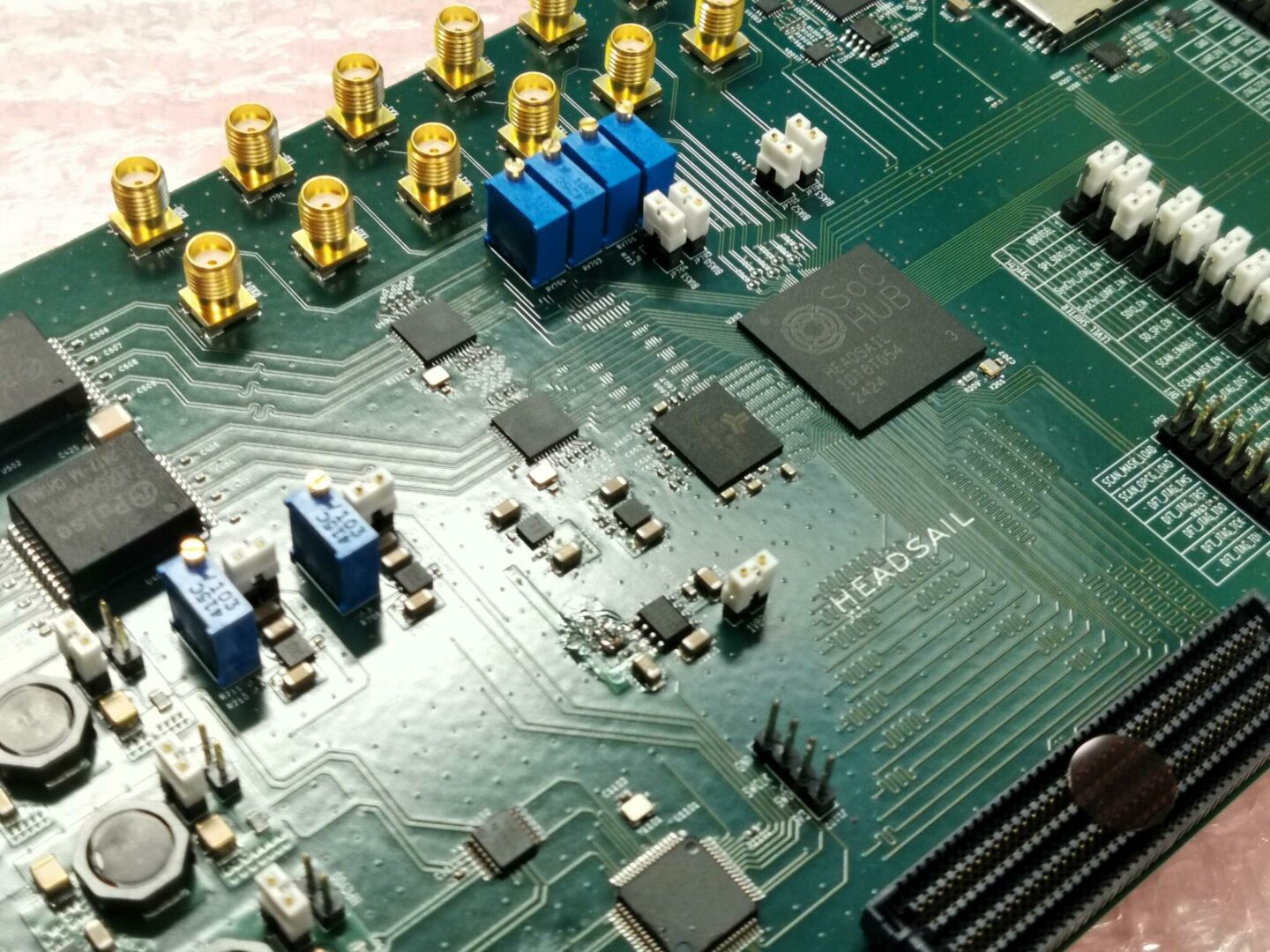SoC Hub collaboration bears fruit: Tampere University tests the consortium’s most complex system-on-chip
17.10.2024
The third system-on-chip of Tampere's SoC Hub consortium has arrived from production. The chip is called Headsail. The Headsail system-on-chip is the most complex of the chips. The testing will be conducted by Tampere University (TAU).
"Headsail represents an important milestone for SoC Hub, showcasing our powerful SoC development capabilities, where complex SoCs are built by adding content to previous designs and reusing blocks that are the most suitable for the new chip", says Timo Hämäläinen, Professor of Computer Engineering at Tampere University. (Press release).
Finnish tech magazine Elektroniikkalehti ETN also reacted to news. Click here to read the news.
Petri Räsänen, Chips from Tampere program director at Business Tampere, shares Hämäläinen’s excitement.
"It’s great to see SoC succeed in such a challenging and unique project at the EU level. There are not many research institutions and universities in Europe capable of designing such complex and advanced chips on this scale", Räsänen says.
Räsänen explains that the complexity of the Headsail chip lies in combining a vast array of different functions and computational power onto a single, tiny chip.
"The functions of multiple devices are packed onto one chip", Räsänen summarizes.
System-on-chips are familiar from smartphones and tablets.
The Headsail system-on-chip is the most complex chip developed by the project consortium. In addition to its 330 million transistors, it features a quad-core 64-bit RISC-V subsystem, an AI accelerator, and custom IP.
The project team will continue with more in-depth testing and demo development. Several use cases have been planned for the chip, including AI applications, audio processing, and real-time critical communication systems.
A long endeavor
Designing and manufacturing a system-on-chip is a long endeavor. The design of Headsail began in late 2022 and lasted until August 2023, after which the chip was sent to production. Three months later the finished, unpackaged chips arrived at Tampere University.
A custom case was designed for Headsail, and this phase took about six months. The final packaged chips were made available to the consortium in July 2024, after which they were installed on development boards to start testing.
"After that, all subsystems could be powered on. The RISC-V processor subsystem successfully executed its first 'hello world' program on each of its cores", says Arto Oinonen from Tampere University, who is overseeing the testing.
Those visiting electronics stores may have read on product information for mobile phones that they might use chips from American companies such as Qualcomm or Apple. According to Räsänen, the technology currently being tested in Tampere represents the second newest generation compared to consumer product chips.
The collaboration project includes not only Tampere University but also technology companies and smart machinery firms such as Nokia, CoreHW, VLSI Solution, Wapice, Hiab, Procemex, and TTTech Flexibilis.
For more information, contact Business Tampere:

